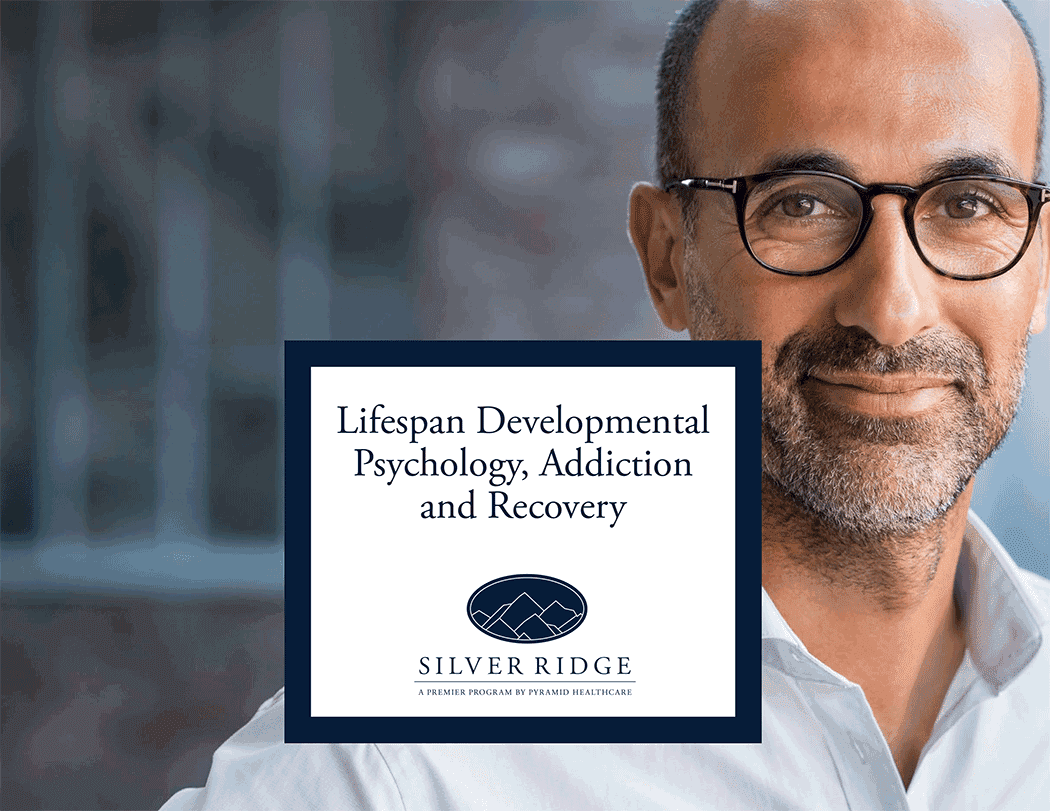Lifespan Developmental Psychology, Addiction and Recovery

Lifespan developmental psychology is the scientific study of growth and change throughout the human lifespan. It examines how thoughts, feelings and behaviors change during a person’s life, and it encompasses biological, social, emotional and cognitive processes. Although there are typical pathways of development that most individuals follow, no two people are exactly alike in the way they change and mature over time.
Developmental psychologists work to describe, explain and optimize an individual’s development. To describe a person’s development, the psychologist focuses on both normative development, which encompass typical patterns of development, and idiographic development, which involves the individual’s unique variations from the norm.
To explain someone’s development, psychologists consider, among other things, the events and environments that have precipitated or prevented growth and changes across the lifespan. Optimizing development requires applying appropriate theories to help people develop missing skills and navigate practical situations in their lives.
Looking at addiction and recovery through the lens of lifespan developmental psychology helps experts develop effective interventions for preventing and treating addiction. Here, we consider developmental psychology and the role of human development in the development and treatment of addiction.
The Stages of Development
Human development occurs in predictable stages, but any number of circumstances can impede normal development at any stage or age and lead to a range of problems, including substance abuse, addiction and other mental illnesses.
Prenatal Development
Development in the womb has an important impact on early psychological development. Abnormal prenatal development and complications at birth can increase the risk of neurodevelopmental disorders later on.
Environmental agents called teratogens can cause problems during prenatal development. Teratogens include:
- Prescription, nonprescription and illegal drugs
- Tobacco
- Alcohol
- Environmental pollutants
- Infectious diseases and parasites
- Maternal malnutrition
- Maternal stress
- Rh factor blood incompatibility between mother and fetus
These environmental agents can lead to developmental problems for the child later in life, including mental illnesses, learning disabilities, behavioral problems and physical defects.
Infancy
Developmental delays in infancy, including those related to the perceptual, sensorimotor, social and language systems, can lead to developmental problems in later childhood. Children who experience developmental delays are at a higher risk of significant behavioral and emotional problems and mental disorders, including addiction.
Toddlerhood
Toddlerhood begins around age two and is characterized by a growing self-awareness, increased language skills and the ability to remember and imagine. Self-control begins to develop, and toddlers start to learn from mistakes.
Toddlers whose caretakers help them test their limits and encourage them to try new things are likely to become confident and self-reliant. Those whose caretakers are overprotective or disapprove of the toddler’s independence are likely to doubt their abilities, feel shame for desiring independence and be unprepared to cope with life later on.
Childhood
Early childhood encompasses ages three to five and finds children developing social relationshipsand enlarging their social circles. Through play, young children explore the world and reach higher levels of cognitive development. They attempt to find their own way through the world. If this is done within healthy social norms, the child develops initiative. Otherwise, the child develops guilt.
Middle childhood occurs between the ages of six and 12. During middle childhood, children develop the skills they’ll need to participate in society, and much of this occurs at school. Here, a child either develops industry or inferiority.
Children develop industry through school work, sports and other activities, and this leads to a sense of competence in the world. Inferiority can develop when parents or teachers fail to recognize a child’s accomplishments or are overly critical of a child’s efforts. A lack of encouragement or an inability to excel can lead a child to feel inadequate and inferior.
Adolescence
Adolescence begins at the onset of puberty and ends as the adolescent becomes an adult. During adolescence, individuals form their personal and social identities. They develop reasoning skills and explore who they are and what they want to become.
During this period, adolescents try new things, test limits, become autonomous and develop a sense of self. They try out a variety of roles, behaviors and ideologies as they form their identity. They’re also impulsive and more likely than other demographics to experiment with drugs.
Early Adulthood
During early adulthood, which spans ages 18 to 25, development is mainly focused on maintaining relationships. Some theories embrace the idea that developing intimacy skills requires the successful navigation of earlier developmental stages and the sense of identity gained there.
If intimacy skills don’t develop during this period, individuals may experience feelings of isolation and alienation. They may develop a fear of commitment and an inability to trust or depend on others.
Middle Adulthood
Middle adulthood occurs between the ages of 25 and about 69. Here, middle-aged adults either develop a sense of purpose or a sense of purposelessness.
During middle age, life events like divorce, the loss of a loved one or the loss of a job can lead to substance abuse as a coping mechanism. Additionally, hormonal changes in both men and women in later middle age can lead to physical and psychological challenges.
Late Adulthood
Late adulthood commences around age 65. During late adulthood, individuals reflect on their lives and either find it successful and develop a feeling of integrity, or they find that they didn’t achieve their goals and develop feelings of despair.
Addiction as a Developmental Disorder
An article published in the journal Current Addiction Reports makes the case for addiction as a developmental disorder. While addiction is associated with a host of risk factors, two of the most important, according to a large body of research, are early adverse experiences and drug abuse in primary caretakers. Together, these risk factors are a powerful force for substance abuse later on, and the developmental issues that set the wheels in motion can begin as early as conception.
Substance abuse during pregnancy is associated with chronic prenatal stress in the mother, which affects the stress level and immune function of the fetus. Research shows that the effects of prenatal stress on childhood development, particularly in the realm of the regulation of emotions, may leave the child at a greater risk of drug abuse and addiction.
Furthermore, infants who are in the care of a substance-abusing parent are often exposed to neglect and abuse, which lead to chronic stress and adversity. These, in turn, lead to an increased risk for drug use later on.
A number of specific genes that influence substance abuse disorders have been identified, and the search for these and others is guided by an understanding of developmental pathways that lead to drug abuse. Recent focus has been on the identification of genes important in the very earliest stages of brain development that are associated with substance abuse much later on.
Problems with attention and self-control in early childhood may be the first expression of a genetic propensity toward addiction and other impulsive behaviors, but this genetic influence can be weakened by parents who provide structure and have a high level of emotional regulation themselves.
Adolescence is a period of development marked by higher levels of impulsivity and higher rates of drug experimentation. This period is important in the pathway to addiction, and parents play an important role in reducing the risk of substance abuse and addiction by helping their children socialize, regulate their emotions and control their behaviors.
Research increasingly shows that there is a continuous group of circumstances during gestation, infancy, childhood and early adolescence that can put individuals on a clear developmental pathway toward addiction. Some of the current literature that reframes addiction as a developmental disorder focuses on:
- The role of interactions between genetics and environment in the development of addictive disorders
- The role of epigenetic mechanisms, or the turning on or off of certain genes by environmental influences, in addiction development
- The role of early childhood adversity in brain changes that lead to an increased risk of addiction
- The role of emotional regulation problems during key developmental periods in addiction development
- The use of intervention and prevention programs across the lifespan that are informed by developmental stages and considerations
Underlying Causes of Addiction
Addiction was once considered to be a moral failing, but it’s now known that addiction is a disease of the brain that affects thought and behavior patterns and impedes normal development across many areas.
The underlying causes of addiction are varied and complex, but in general, they boil down to missing coping skills. Common causes of addiction include a lack of developmental maturity, chronic stress, mental illness and a history of trauma.
A Lack of Developmental Maturity
Each stage of normal human development, particularly in the early years, leads to eventual developmental maturity. Environmental and cultural factors can impede this development, leading to a disconnect between a person’s values and their actions.
A lack of maturity and essential coping skills can lead to impulsive behaviors driven by an individual’s whims and cravings. Pleasure-seeking and pain avoidance become central to daily life, and drugs or alcohol may be the source of both pleasure and pain avoidance. Because the individual lacks the skills to cope with pain and deny pleasure when it’s self-destructive, chronic drug abuse may result, and this can lead to addiction.
Chronic Stress
The chronic stress that comes with life situations like abuse, poverty and physical or mental illness often leads to substance abuse as a coping mechanism, particularly in individuals who, for a variety of reasons, didn’t develop these skills in the course of normal development. Those who rely on drugs or alcohol to reduce feelings of stress and cope with unpleasant life experiences are at a higher risk of developing an addiction.
Mental Illness
According to the National Institute on Drug Abuse, people who are diagnosed with a mood or anxiety disorder are about twice as likely as the general population to also suffer from a substance use disorder. Similarly, people who are diagnosed with a substance use disorder are about twice as likely as the general population to also suffer from a mood or anxiety disorder.
The high prevalence of co-occurring disorders is due to a few factors. First, drugs and alcohol can cause the onset of symptoms of mental illness. Additionally, mental illness often leads to substance abuse as a form of self-medication in an attempt to reduce symptoms of depression or anxiety. Finally, both drug abuse and other mental illnesses are often caused by overlapping factors like genetic vulnerabilities and early exposure to stress or trauma.
A History of Trauma
Traumatic events in childhood, including neglect, abuse and medical illness, have a profound effect on many areas of development. An insecure childhood marked by family dysfunction, violence, poverty or other adverse circumstances interfere with a child’s ability to process information, develop confidence, make good decisions and rely on others.
It also leads to an inability to regulate emotions, develop a sense of self or control impulses. Later on, these developmental deficits—especially when combined with unpleasant memories or other symptoms of post-traumatic stress disorder—can lead to substance abuse as a way to cope.
According to a study published in the journal Psychiatric Services, up to 80 percent of women in treatment for a substance use disorder report being the victim of physical or sexual abuse in their lifetime. Another study published in the journal Depression and Anxiety found that up to 59 percent of adolescents who experience symptoms of post-traumatic stress disorder develop a substance abuse problem later in life. Combat veterans, first responders and survivors of natural disasters or accidents are also at a high risk of developing a substance use disorder.
Developmental Psychology and Addiction Treatment
Developmental maturity is central to successful addiction recovery. Robert Kegan, a leader in the study of adult development, delineated five progressive orders of consciousness:
- Order 1 develops around the age of two, when children realize that they have control over their reflexes and become aware that objects in their environment are independent from themselves.
- Order 2 occurs as thinking becomes more logical and organized and individuals relate to others as separate, unique beings. In this order, individuals develop a sense of who they are and what they want. But they’re mostly concerned with their own needs and fail to take into account the effects of their actions on others.
- Order 3 involves more abstract thinking. Individuals are aware of their feelings and gain an appreciation that other people have equal standing in the world. They find support in mutually rewarding relationships.
- Order 4 involves the ability of individuals to take responsibility for and ownership of their own internal processes and establish their personal set of values and ideologies. Individuals at this stage are independent and self-regulating. They can accept things about themselves that they previously viewed as unacceptable, and they have an increased acceptance of moral differences between themselves and others.
- Order 5, which Kegan notes is rarely reached before the age of 40, finds individuals seeing beyond themselves and others and understanding that all people and systems are interconnected. They recognize their interdependence and commonalities with others.
Development and Recovery
Moving from the second order to the third or the third to the fourth is highly beneficial in recovering from an addiction, according to the Rhode Island Department of Behavioral Healthcare. Developmental shifts, accelerated through psychotherapy, bring about new perspectives that are essential for successful recovery.
A higher level of maturity enables individuals to view cravings and psychological discomfort in a new way. Instead of following their immediate impulses, they’re able to view impulses and discomfort in a larger context and cope with them more effectively. They consider the consequences of their actions and how these consequences affect the people around them. They think about how their drug or alcohol use affects their own happiness, health, relationships and future.
According to the Substance Abuse and Mental Health Services Administration, addiction recovery is a process of growth and change, just as development is a process of growth and change. Successful recovery requires changing the way a person functions in the world.
A high-quality treatment program for addiction occurs within a developmental framework that considers an individual’s development, maturity and unique issues. Through a variety of traditional and complementary therapies, individuals in treatment develop critical coping, communication and interpersonal skills that promote long-term sobriety and a higher quality of life.
Traditional therapies like cognitive-behavioral therapy help individuals identify and change faulty patterns of thought and behavior that perpetuate the addiction. They examine their beliefs and discard those that are inaccurate or outdated. They learn to cope with stress, negative emotions and unhappy memories. They develop skills to help them weather cravings, deal with relationship challenges and think ahead to the potential consequences of their actions.
Complementary therapies, such as art therapy, mindfulness meditation and nature therapy help individuals reduce and cope with stress and improve their self-awareness, self-confidence and self-esteem. Through these therapies, individuals develop trust, empathy and compassion—especially for themselves. They begin to see the world in a larger context that helps them transcend the need for immediate gratification.
It’s not just the development of missing skills that promotes successful recovery. Developing a sense of satisfaction in a life without drugs or alcohol is also crucial for successful recovery from an addiction. Treatment therapies help individuals identify their strengths, values and the things that give purpose and meaning to their lives. They envision an ideal future and set realistic, achievable goals to get them there.
The National Institute on Drug Abuse stresses that willpower and good intentions are rarely enough to end an addiction for the long-term. Looking at addiction through the lens of developmental psychology, it’s easy to see why this is true. We can only achieve what we’re equipped to achieve.
Addressing lifespan developmental psychology and learning essential coping skills are almost always required for ending an addiction once and for all. Addiction treatment focused on developmental psychology principles helps people fill in developmental gaps and create an authentically happy life for themselves.









